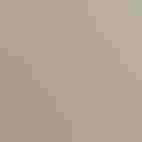Bendire’s Thrasher
At a Glance
One of the last resident birds in the southwest to be discovered, this thrasher was overlooked until the 1870s, when Charles Bendire noticed that it was different from the common Curve-billed Thrasher. The bird is still easily overlooked as it runs about on the desert floor or flies from bush to bush, but its sweet, melodious song is quite distinctive. With its relatively small bill, it does less digging in the soil than other desert thrashers.
All bird guide text and rangemaps adapted from Lives of North American Birds by Kenn Kaufman© 1996, used by permission of Houghton Mifflin Harcourt Publishing Company. All rights reserved.
Category
Mockingbirds and Thrashers, Perching Birds
IUCN Status
Vulnerable
Habitat
Arroyos and Canyons, Desert and Arid Habitats, Fields, Meadows, and Grasslands, Shrublands, Savannas, and Thickets
Region
California, Rocky Mountains, Southwest
Behavior
Direct Flight, Rapid Wingbeats, Running
Population
83.000
Range & Identification
Migration & Range Maps
Migratory in northern part of range, and even in southern Arizona is partly migratory, being numerous mostly from February to September.
Description
9-11" (23-28 cm). Short, straight bill slightly paler at base; yellow eyes, narrow sharp spots on upper chest. Juvenile Curve-billed Thrasher can look almost identical.
Size
About the size of a Robin
Color
Black, Brown, Gray, Tan, White
Wing Shape
Broad
Tail Shape
Long, Rounded, Wedge-shaped
Songs and Calls
A clear, melodious warble with some repetition, and continuing at length. Call is a low chuck.
Call Type
Chatter, Chirp/Chip, Flute
Habitat
Desert, farmland; cholla, thorny bushes. Lives in various kinds of dry, semi-open habitats. Perhaps most common in Sonoran desert with variety of shrubs and cholla cactus and with some understory of grass. Also found where dense hedges or shrubs are next to farmland, and in grassland with scattered shrubs and yuccas.
Sign up for Audubon's newsletter to learn more about birds like the Bendire's Thrasher
Behavior
Eggs
Usually 3, sometimes 4, rarely 5. Whitish to pale gray-green, blotched with brown and buff. Incubation period and role of the parents in incubation are poorly known.
Young
Both parents feed the nestlings. Young leave nest about 12 days after hatching. 2 broods per year, perhaps rarely 3.
Feeding Behavior
Forages mostly on the ground. Picks up insects from the surface, or uses its bill to scratch or dig slightly in the soil or to turn over rocks or other items. Has a small bill, and does not dig as effectively as most thrashers.
Diet
Mostly insects, some seeds and berries. Feeds mainly on insects, especially ants, termites, beetles, antlions, grasshoppers, and others; also spiders. Also feeds on seeds of grasses and other plants, various berries, and cactus fruits, including those of giant saguaro.
Nesting
Male sings in spring and summer to defend nesting territory. Nest: Usually placed in dense low shrub, tree, or cactus, commonly in cholla, yucca, mesquite, acacia, desert hackberry, also in other low growth, usually 3-10' above the ground. Nest is typically a bit smaller, more compact, and made of finer materials than the nests of most thrashers; usually has outer layer of twigs, inner layer of soft material such as grass, rootlets, feathers, animal hair.
Conservation
Conservation Status
A vulnerable species with a relatively small range. Still fairly common in some protected areas of undisturbed desert, and even in a few types of farmland, but threatened by ongoing destruction and degradation of habitat. The total amount of suitable habitat has declined sharply in recent decades, and surveys suggest that populations of this thrasher have been declining as well.
Climate Threats Facing the Bendire's Thrasher
Choose a temperature scenario below to see which threats will affect this species as warming increases. The same climate change-driven threats that put birds at risk will affect other wildlife and people, too.

